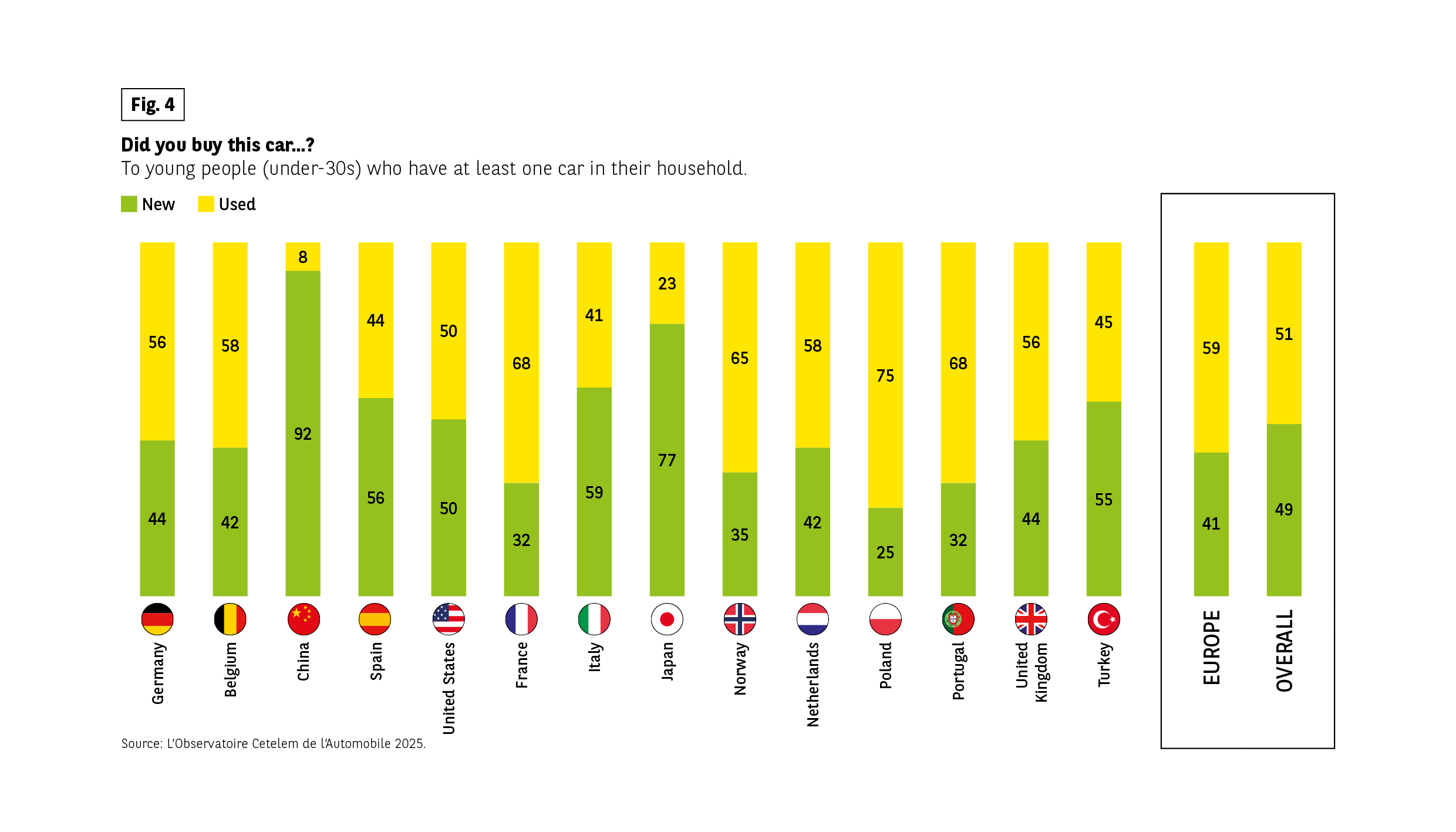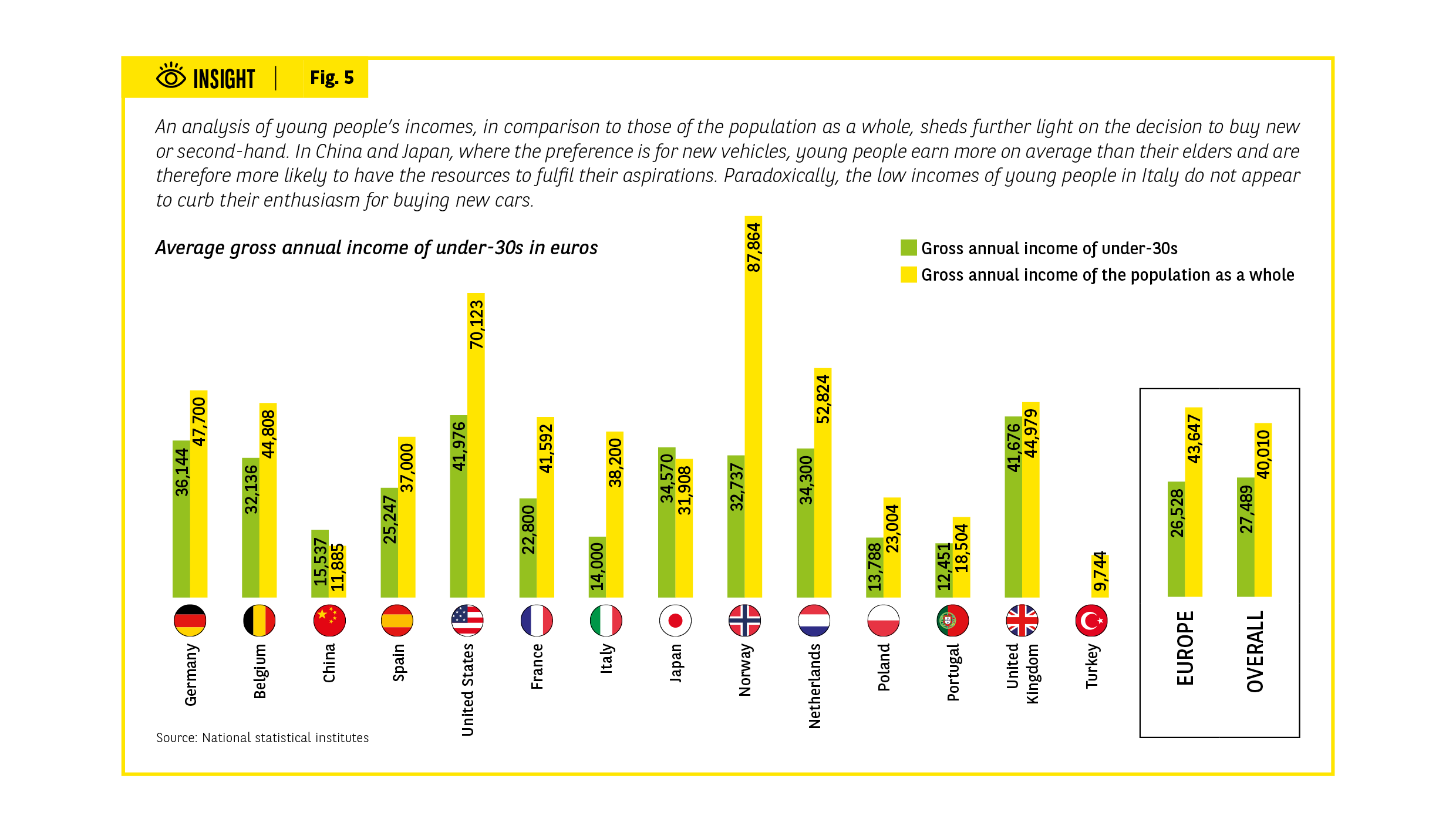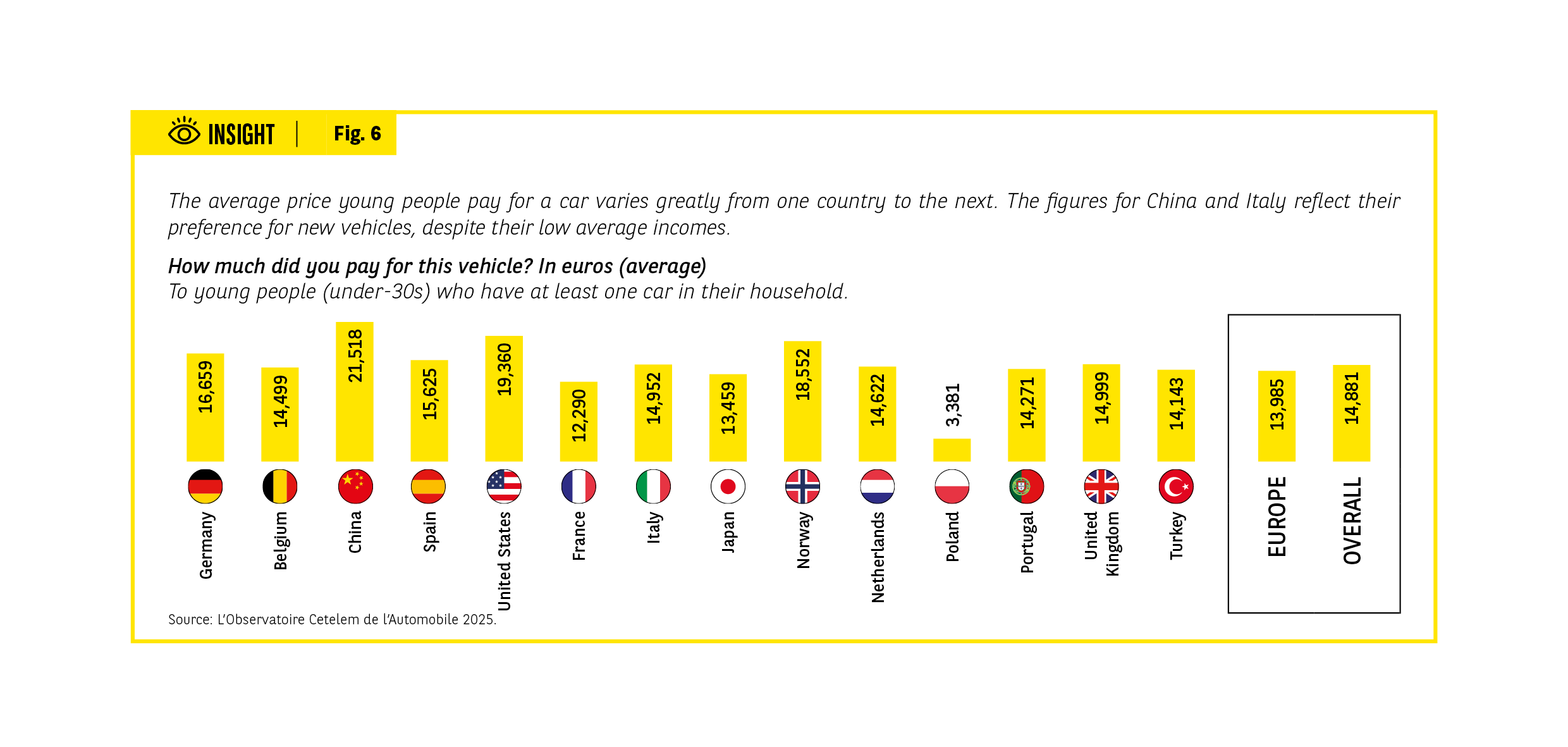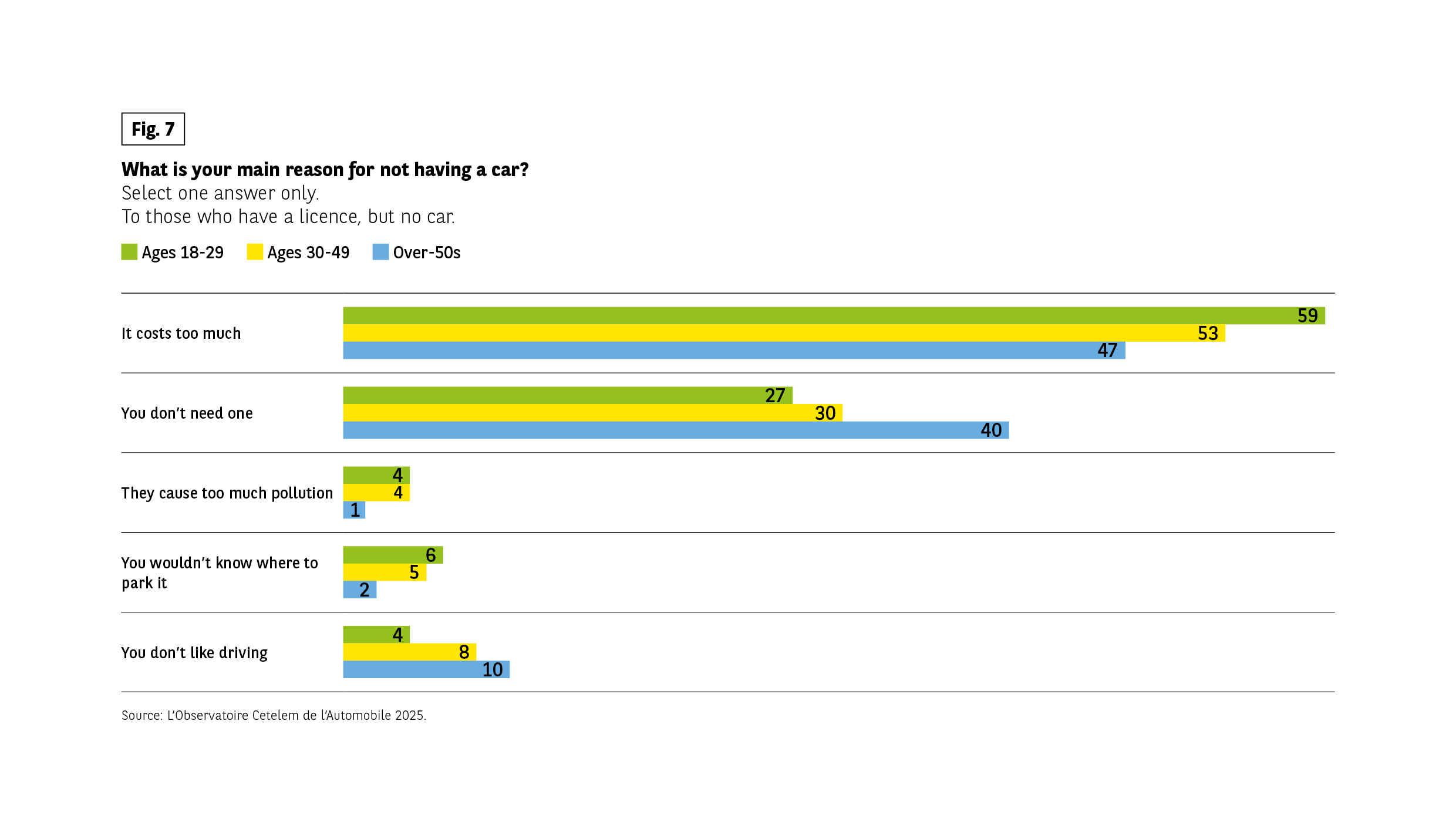But the financial burden remains high
THE USED OPTION IS THE MOST COMMON
Overall, young people seem to be split between buying their first car new or used, whereas in 2011 they were more likely to go for the second-hand option (63% vs. 51% this year). Seniors, on the other hand, are more inclined to buy a new car (59%) (Fig. 4). However, stark differences can be observed between the countries. In China, 9 out of 10 young people opt for new vehicles. The figure for Japan is 8 out of 10. The Italians and Spanish complete the top four. The bias towards new cars in the Asian and Mediterranean markets is a long-established trend. This edition of L’Observatoire Cetelem confirms that young people are not immune to it. It is also worth noting that the second-hand market in China is very underdeveloped. One must go to Poland, Portugal and France to find the biggest fans of used cars. With its highly-developed secondhand market, the situation in France is very different to that in China.
PRICE: THE MAIN OBSTACLE TO A PURCHASE
Financial constraints are the main hurdle for young people who have a driving licence, but have not yet acquired a vehicle. 6 out of 10 think cars cost too much, a significantly higher score than for seniors. This is a constraint that the Americans, Turks and Portuguese feel particularly keenly, while it is seen as less of a problem in Japan. The second most frequently mentioned factor is not having use for a car, with seniors most likely to make this point (4 out of 10 state that they can live without a vehicle). A much smaller proportion of young people with a licence but no car say that they don’t need a vehicle. Only just over a quarter make this argument (Fig. 7).
PURCHASING INTENTIONS ARE FAR FROM ELECTRIC
Young people’s short-term purchase intentions still reveal a preference for second-hand cars in a good half of cases. When it comes to choosing an energy source, EVs occupy the number two spot, behind petrol, but ahead of diesel, which remains the top choice in the 30-49 age group. The fact that the electric vehicle market is still relatively small partly explains this result.
And once again, price is not the main barrier preventing drivers from going electric. Young people are the first to mention the potential difficulties involved in charging an EV (32% vs. 31%). This is seen as a factor that could hinder their freedom to travel, which they consider precious and is a topic we will return to later. Vehicle range comes third in the list of constraints.
Seniors place more emphasis on price (50%), without neglecting the other two factors.




